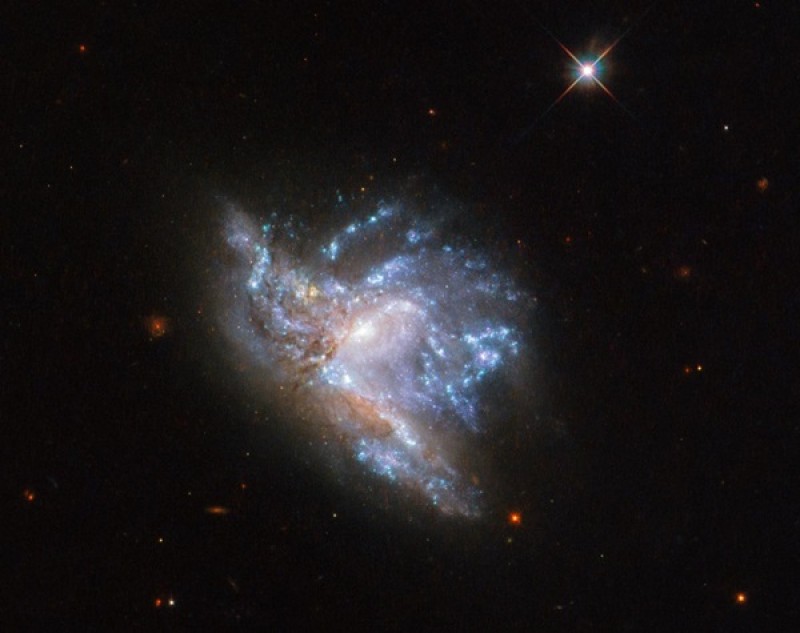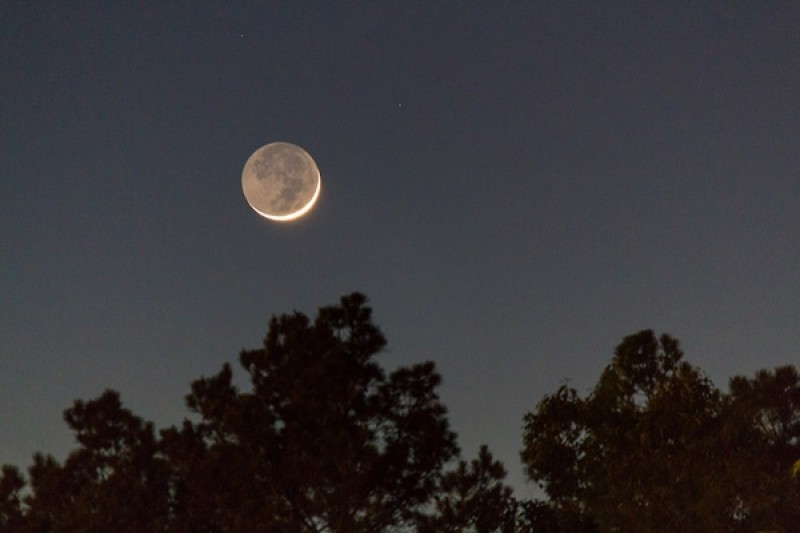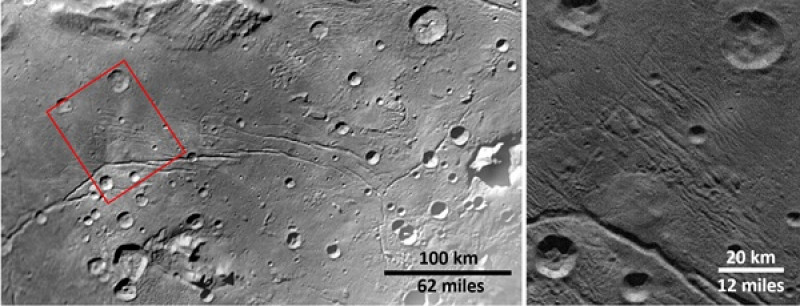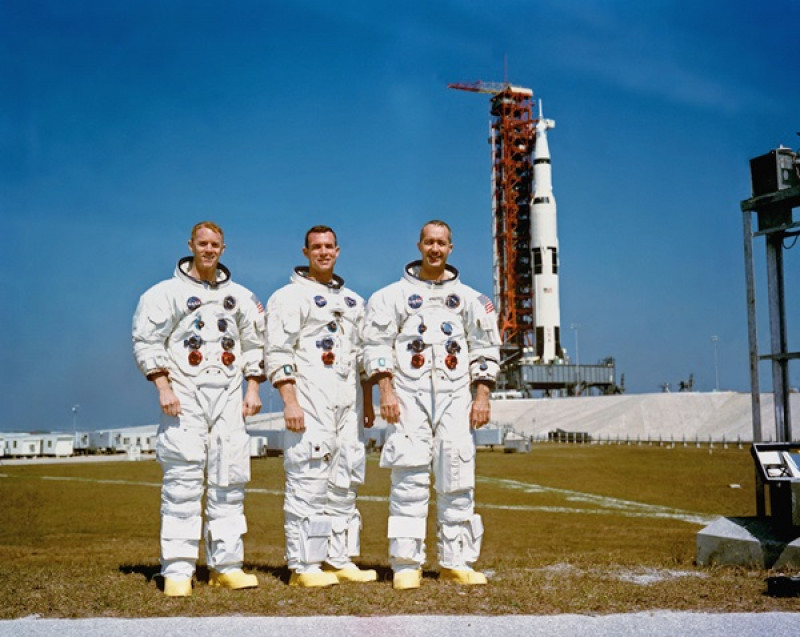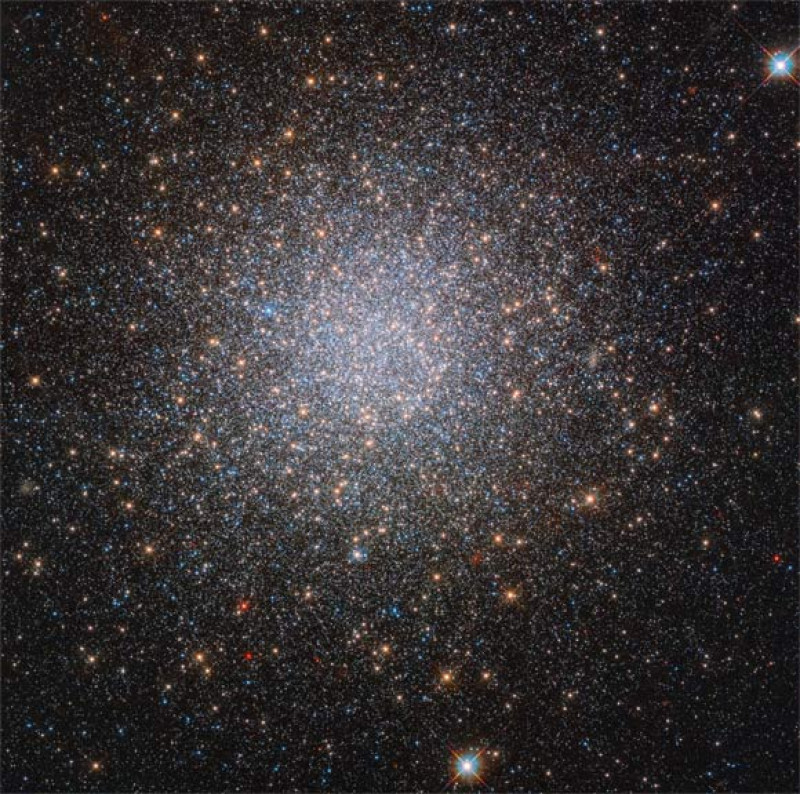News
Astronomers spot massive twin stars nestled close together
Wednesday, March 13th 2019 07:15 PM
Researchers have found two massive young stars nestled closer together than anything astronomers have seen so far. By studying PDS 27 and its companion, located about 8,000 light-years from Earth, astronomers hope to learn more about how stars like this form and evolve.Something like half the stars in our galaxy orbit in pairs, triplets, or even quadruple-star systems. And scientists suspect that nearly all stars may form in multiples before splitting apart as they age. This is because stars form in groups, with the massive clouds of dust and gas that give birth to stars – stellar nebulae – forming thousands of stars in brief periods. Often these stars are born close enough to orbit one another, and that’s why stellar twins and triplets are quite common in the universe. High-mass stars in particular, like PDS 27, are almost always born with companions.But even these sibling stars often orbit something like 1,000 astronomical units (AU; one AU is the average Earth-Sun...
Read More
Read More
Hubble spies a dazzling collision between two galaxies in Hercules
Monday, March 11th 2019 09:52 PM
The Milky Way and the Andromeda Galaxy are the two biggest players in our galactic neighborhood. With each galaxy weighing in at roughly a trillion times the mass of the Sun, they serve as the gravitational anchors that prevent our Local Group — a collection of more than 50 galaxies — from flying apart. However, because these two behemoths are so massive, they're also destined to collide in some 4 billion years, give or take, which will throw our quiet corner of the cosmos into chaos.Though the notion of interacting galaxies seems like perfect fodder for science fiction, such collisions are not far-fetched; they actually occur quite frequently throughout the universe. In fact, researchers believe that most galaxies experience collisions and mergers at some point (or many points) during their lives. Over the years, astronomers have spotted dozens of pairs of galaxies in the midsts of mashups, and now, Hubble has captured yet another cosmic...
Read More
Read More
The Sky This Week from March 8 to 17
Saturday, March 9th 2019 07:31 PM
Friday, March 8With an age of 4.5 billion years, “young” might not seem an appropriate word to describe our Moon. But tonight, you have an exceptional opportunity to see what astronomers call a “young Moon” — a slender crescent visible in the early evening sky. With New Moon having occurred just two days ago, only 5 percent of our satellite’s disk appears illuminated after sunset tonight. You can find the Moon about 10° above the western horizon an hour after sunset. You should notice an ashen light faintly illuminating the Moon’s dark side. This is “earthshine” — sunlight reflected by Earth that reaches the Moon and then reflects back to our waiting eyes. March is a particularly good month to view a young Moon. Luna gains altitude quickly from night to night because the ecliptic — the apparent path of the Sun across the sky that the Moon and planets follow closely — makes a steep angle to the western horizon...
Read More
Read More
Before we colonize the Moon, we must learn to mine there
Friday, March 8th 2019 10:41 PM
If you were transported to the Moon this very instant, you would surely and rapidly die. That’s because there’s no atmosphere, the surface temperature varies from a roasting 130 degrees Celsius (266 F) to a bone-chilling minus 170 C (minus 274 F). If the lack of air or horrific heat or cold don’t kill you then micrometeorite bombardment or solar radiation will. By all accounts, the Moon is not a hospitable place to be.Yet if human beings are to explore the Moon and, potentially, live there one day, we’ll need to learn how to deal with these challenging environmental conditions. We’ll need habitats, air, food and energy, as well as fuel to power rockets back to Earth and possibly other destinations. That means we’ll need resources to meet these requirements. We can either bring them with us from Earth – an expensive proposition – or we’ll need to take advantage of resources on the Moon itself. And that’s where the idea o...
Read More
Read More
Craters on Pluto and Charon show Kuiper Belt lacks small bodies
Monday, March 4th 2019 10:49 PM
When New Horizons flew past Pluto and its moon Charon in 2015, it took a lot of pictures. From studying those images, scientists have recently realized that while both bodies are covered in craters, almost none of those craters are small, meaning there may not be many small bodies around to smash into them. This changes astronomers’ views of the Kuiper Belt, the region of small – but apparently not too small – rocky and icy bodies of which Pluto is a part.
No Tiny Craters
Astronomers looked at images taken from all over Pluto and Charon, but focused their most detailed investigations on Charon’s Vulcan Planitia, a broad plain that was resurfaced early in Charon’s history. The smooth icy surface makes it easy to count craters, though researchers point out that they get similar – if less clear – results from other regions on Charon and Pluto. They found that while there are plenty of large and medium-sized craters, there a...
Read More
Read More
The Sky This Week from March 1 to 10
Saturday, March 2nd 2019 10:30 PM
Friday, March 1The variable star Algol in Perseus reaches minimum brightness at 7:19 p.m. EST, when it shines at magnitude 3.4. If you start viewing as soon as darkness falls, you can watch it more than triple in brightness (to magnitude 2.1) over the course of about five hours. This eclipsing binary star runs through a cycle from minimum to maximum and back every 2.87 days. Algol appears high in the west after sunset and sinks slowly toward the northwestern horizon after midnight.Saturday, March 2If you are up before dawn this morning, you’ll see a slender crescent Moon rising less than 5° to the right of brilliant Venus. The two clear the horizon before 5 a.m. local time and climb 10° high an hour before sunrise. Venus shines at magnitude –4.1 against the background stars on the Sagittarius-Capricornus border. (The planet crosses from the former to the latter constellation today.) If you target Venus through a telescope, you’ll see a disk that spans 15" an...
Read More
Read More
Rusty Schweickart remembers Apollo 9
Friday, March 1st 2019 08:41 PM
Before Neil Armstrong set foot on the Moon, becoming the first human to step on another world, we had to be ready. A big part of the readiness came earlier that year, when three astronauts flew in Earth orbit during NASA’s Apollo 9 mission. This 10-day adventure commenced March 3, 1969, less than five months ahead of the Moon landing, and it was a critical milestone. Apollo 9 marked the first complete test of the Apollo system. Commander Jim McDivitt, along with Command Module Pilot David Scott and Lunar Module Pilot Russell “Rusty” Schweickart, put all the systems through their paces.
The mission was a turning point for several reasons. It was the first live orbital test of the lunar module (LM), the lander that would carry two astronauts to the Moon’s surface. The rendezvous and docking procedures between the LM and the command/service module were also tested. And it offered practice runs for astronauts to walk in space in order to conduct mainten...
Read More
Read More
How plate tectonics could make rocky planets hospitable to life
Thursday, February 28th 2019 11:57 PM
Shifting, slipping and colliding tectonic plates played an essential role in the emergence and evolution of life on Earth. Such tectonic activity generated volcanoes that spewed carbon dioxide and other gases into the air. Rain brought the gases down to Earth, where they were pushed underground again by moving plates. For billions of years the cycle has regulated the climate and stabilized the temperature, which helped enable life to arise.
Plate tectonics like what's seen on Earth seems rare — no other world in our solar system has tectonic activity currently — but scientists now argue there could be a different way to generate an active crust on alien worlds.
The researchers argue that a planet orbiting close to its host star can experience stresses from that host's gravitational pull. Those stresses then weaken the outer crust, aiding or generating plate tectonics similar to those seen on Earth. That process could increase the likelihood of life develop...
Read More
Read More
Astronomers using the NASA/ESA Hubble Space Telescope have observed the massive, luminous globular cluster NGC 2419, also known as the ‘Intergalactic Wanderer.’
Tuesday, February 26th 2019 11:38 PM
Globular clusters are densely packed, spherical collections of hundreds of thousands or even millions of stars. They are among the oldest known objects in the Universe and are relics of the first epochs of galaxy formation.
About 150-180 such clusters are known to exist around our Milky Way Galaxy.
NGC 2419 was discovered on December 31, 1788 by the British astronomer William Herschel and is located in the constellation Lynx.
Also known as GCl 12 and C 0734+390, the cluster is at a distance of about 300,000 light-years from the Solar System and at the same distance from the Milky Way’s center.
It is sometimes called the ‘Intergalactic Wanderer,’ an appropriate title considering that the distance to the Milky Way’s satellite galaxy, the Large Magellanic Cloud, is only about 160,000 light-years.
The stars populating globular clusters are very similar to one another, with similar properties such as metallicity.
The similarity of...
Read More
Read More
‘FarFarOut’: astronomer finds potential furthest object in solar system
Monday, February 25th 2019 10:40 PM
A new object has been discovered in the distant reaches of our solar system and given the name FarFarOut, according to a prominent astronomer.
At 140 times further away from the sun than our own planet is, the newly identified body – if its discovery is confirmed – will become the furthest known object in our solar system.
The current record holder – a dwarf planet at 120 times the Earth-sun distance – was named merely FarOut when it was spotted by the same team in December last year.
The latest discovery was made by Dr Scott Sheppard, of the Carnegie Institution for Science in Washington DC, who with his team is working on analysing astronomical data to track down a much mooted but as yet unspotted body known as Planet Nine, thought to have 10 times the mass of Earth.
The hypothetical Planet Nine, thought to be lurking in the distant Oort cloud, has been suggested as exerting a gravitational pull on objects in the depths of the solar system,...
Read More
Read More

